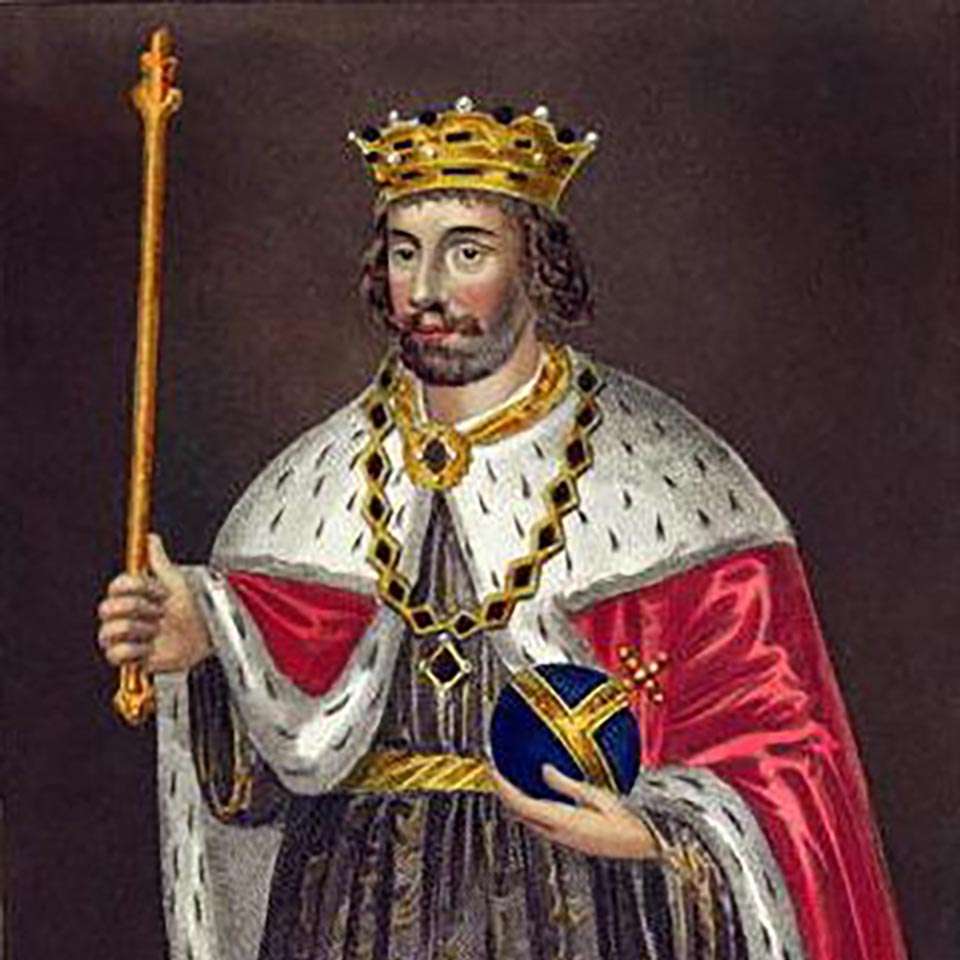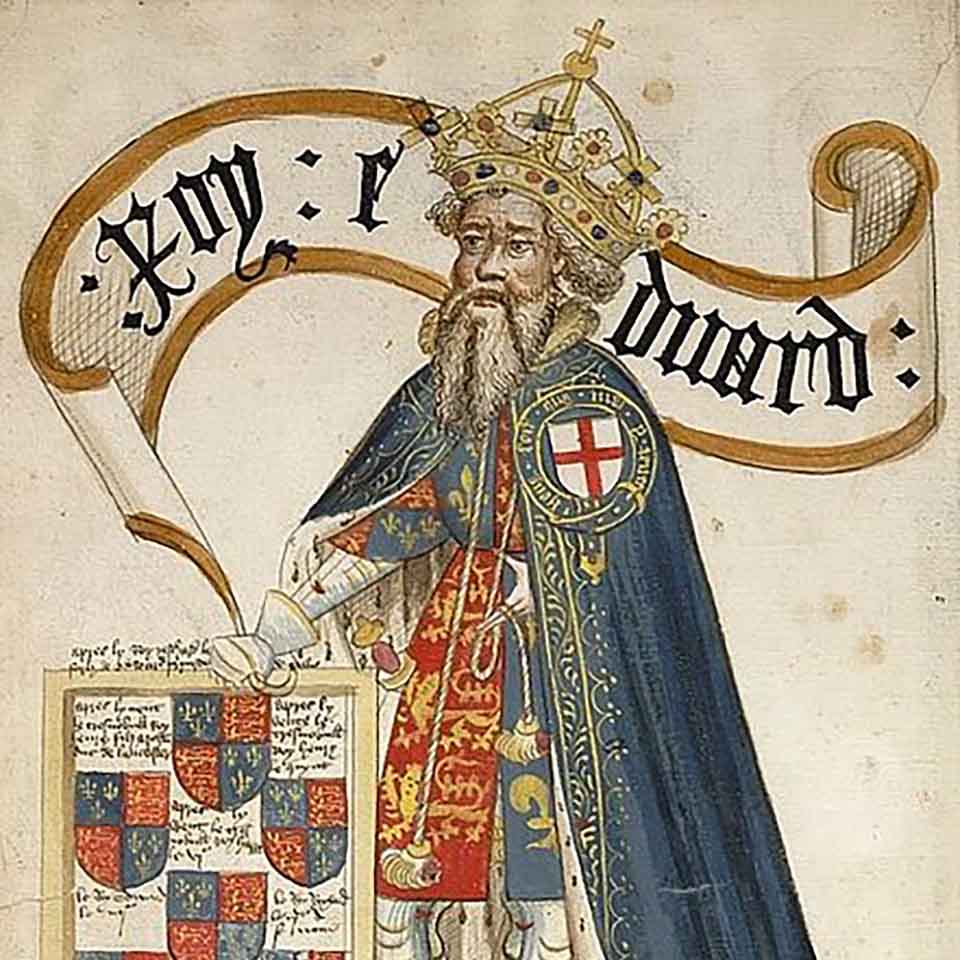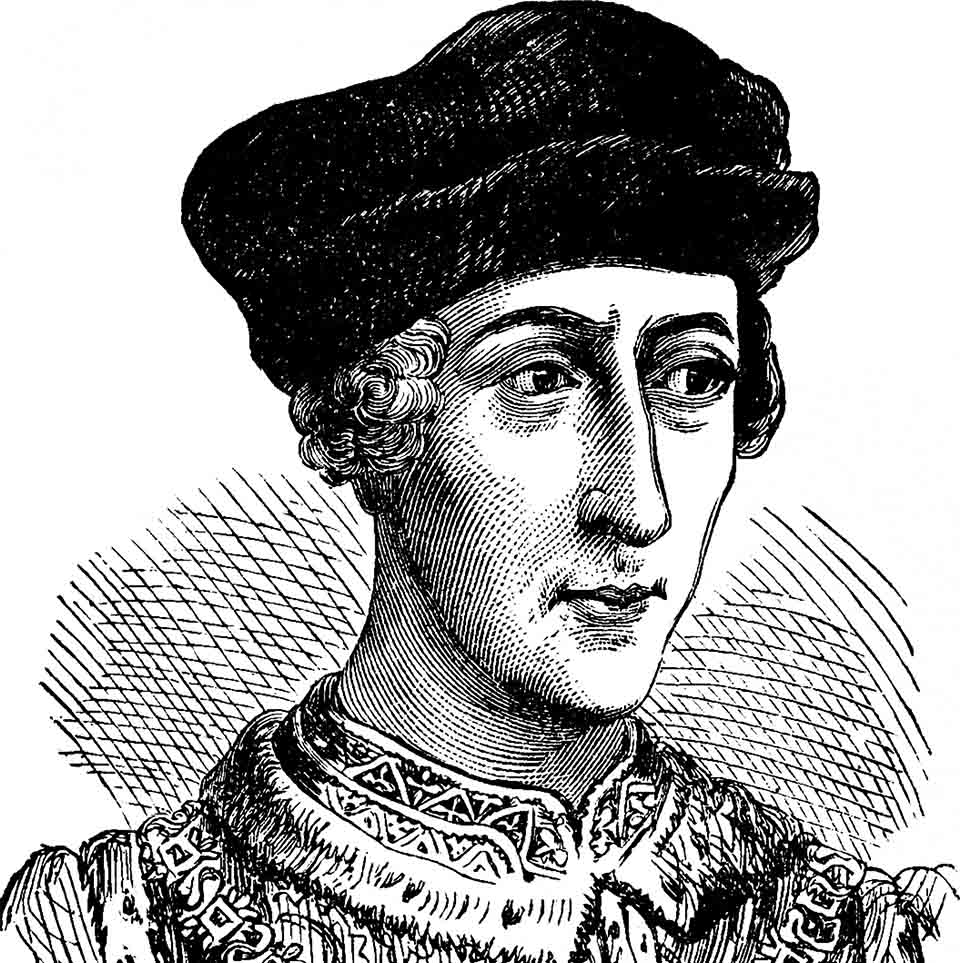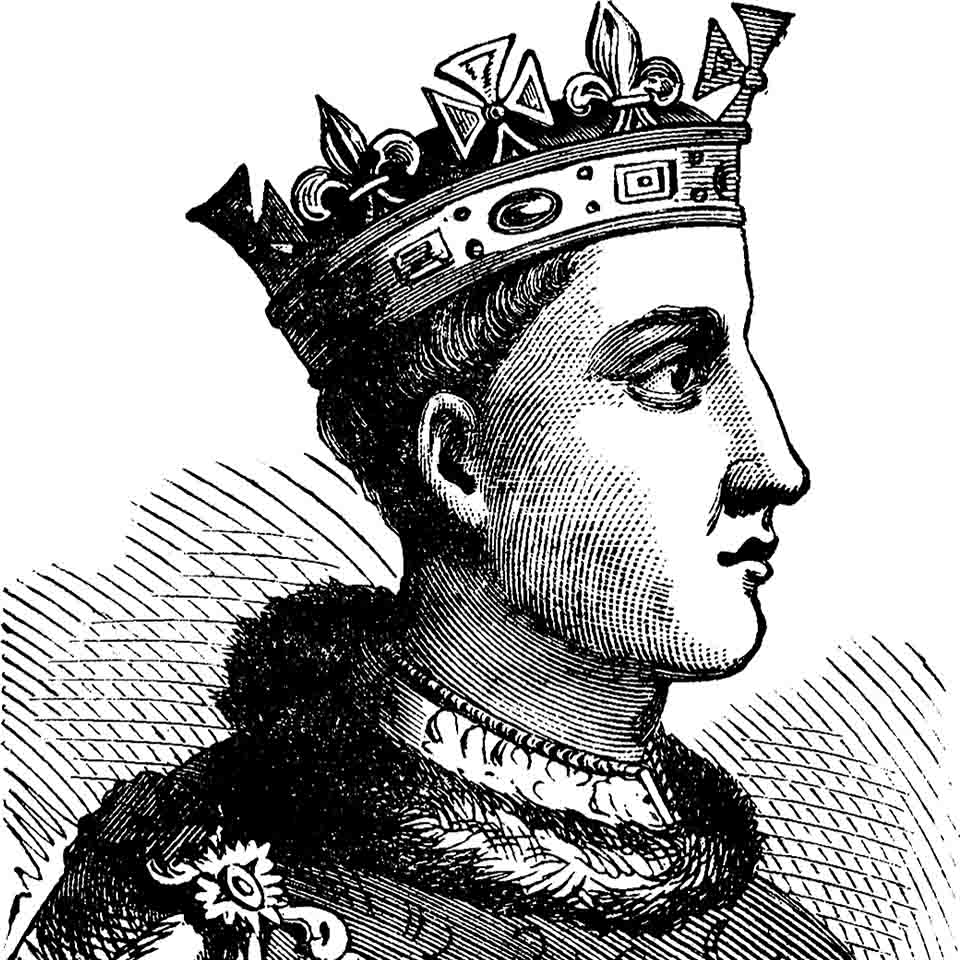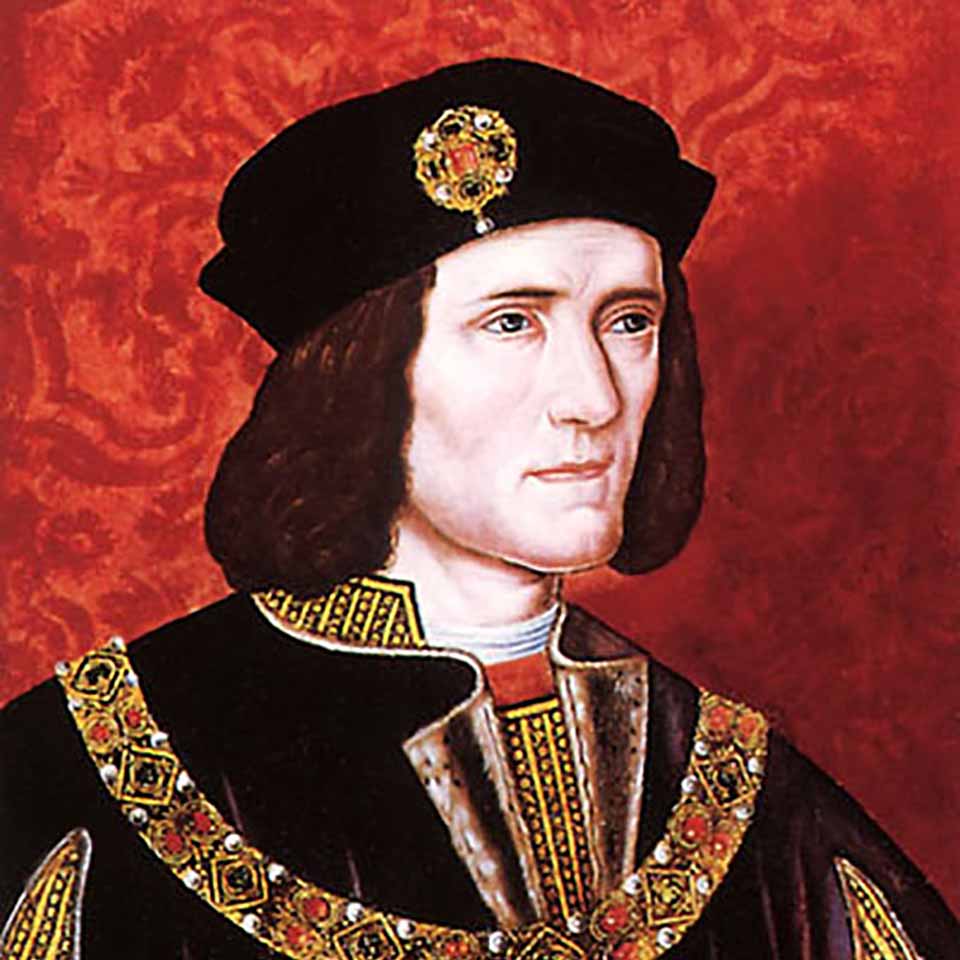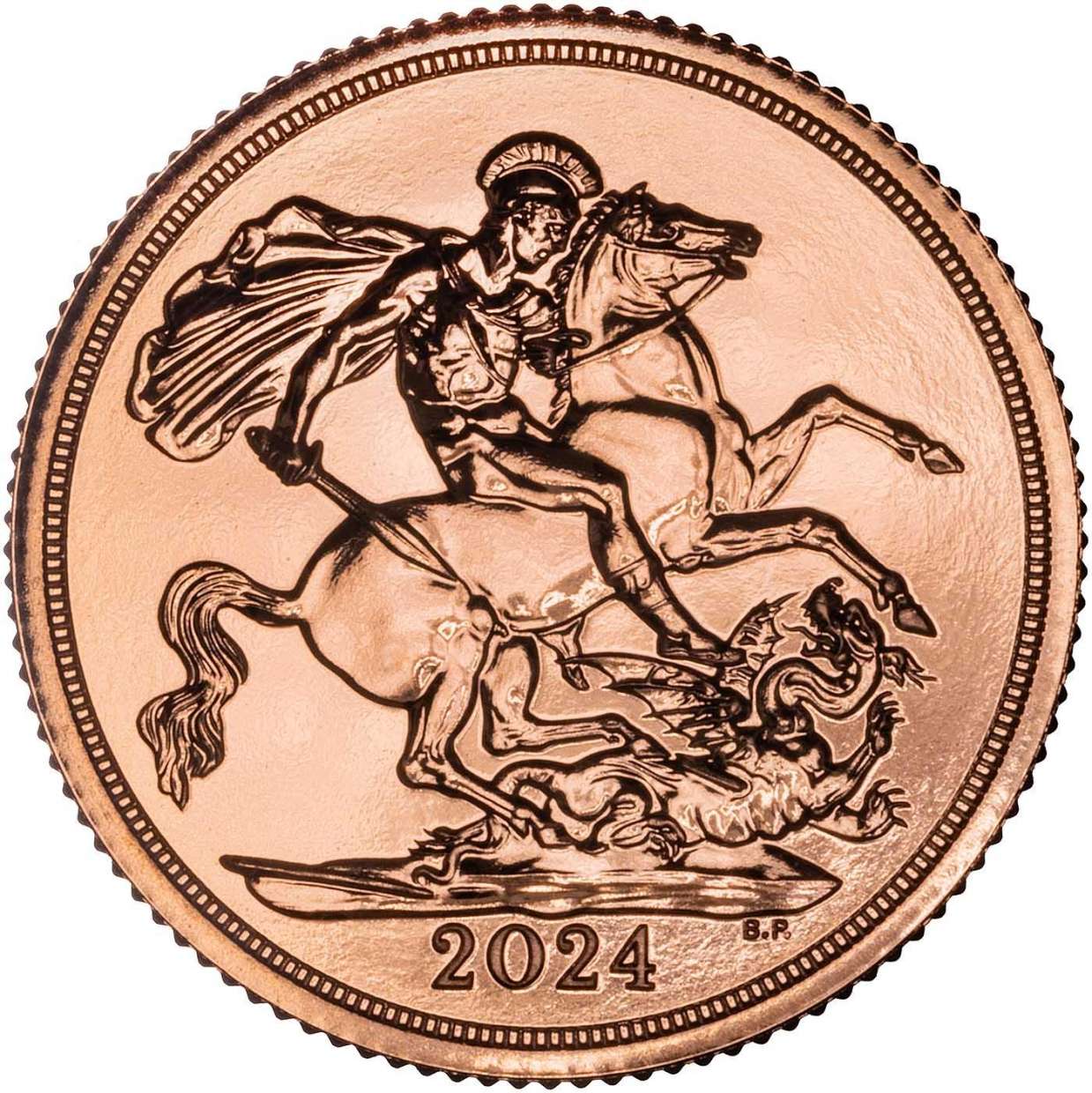King Edward I (1272 – 1307)
Synopsis
Edward I was one of England's most formidable kings. He conquered Wales and came within an ace of doing the same to Scotland. Thanks to the film 'Braveheart', he has acquired a reputation as a tyrannical psychopath, but as with many, many other aspects of that film, this portrayal is somewhat inaccurate, although his reign certainly had its darker aspects.

Early Life
Born in 1239 to Henry III and Eleanor of Provence, Edward was named after his father's favourite saint, Edward the Confessor, the penultimate Anglo-Saxon King of England, who also rebuilt the Abbey that the Confessor had built. The future Edward I was born in this abbey prior to its renovation by his father. Edward was a sickly child, but eventually grew into a tall and powerful adult, leading him to acquire the nickname of 'Longshanks'. In 1354 at the age of 15, 'Longshanks' married his 13-year-old second cousin, Eleanor of Castile, in order to prevent a war with Ferdinand III, King of Castile.
Although the young prince often quarrelled with his father on political matters, when the Baronial War broke out in 1264, Prince Edward fought firmly on his father's side, although he suffered an early lesson in defeat when Royal Forces were defeated at the Battle of Lewes, which led to Edward being forced into captivity by the rebels. He soon escaped however, and with the lessons learned from the previous defeat, he led Royalist forces to victory at the Battle of Evesham the following year.
As the rebellion started to wind down, Edward began to plan his next military adventure, a crusade to the Holy Land.
The Eighth Crusade
In 1270, Edward departed England with his wife to take part in yet another crusade to retake Jerusalem, along with Louis IX of France. Although Edward managed to win some successes, he failed to retake Jerusalem, and the doomed crusader kingdom only survived for a further 10 years before finally being overrun by the Saracens, never to rise again. Nevertheless, in spite of a failed assassination attempt by the Hashishin cult which he managed to fight off, Edward benefitted from the experience, which greatly improved his skills in the arts of war and castle-building, which was to prove useful in his campaigns in Great Britain later on.
As he was traveling home in 1272, Edward learned that his father had died, and that he was now King of England. In spite of the fact that there had been previous Anglo-Saxon kings named Edward (including the Confessor whom Edward had been named after) Edward was described as 'Edward the First'. This was perhaps a reflection of the view that was still held amongst the nobility and royalty that they were essentially Frenchmen ruling over a conquered land. As far as the nobility were concerned, this was still a land of subjugated natives living under a foreign yoke, and the term 'Englishman' was still used as a contemptuous epithet amongst the 'English' elite and would continue to be so for some time afterwards.
Accession
Edward I took his time returning home. Government had been left in the very competent hands of Robert Burnell, Archbishop of Canterbury, and the new King had no cause to hurry home. During this time he ambled north slowly, taking time to visit the Pope, and suppress a rebellion that had broken out in Gascony (an English possession in France). He finally arrived home and entered London in August 1274, when he was finally crowned at the Abbey in which he was born.
Adminstrative Reforms
Having arrived back in England, Edward I appointed his former regent Robert Burnell as his Chancellor, who continued to be a key advisor to the King for the rest of his life. Edward I commissioned a census known as the 'Hundred Roles'. As with the Doomsday Survey carried out by William the Conqueror in the 1080s, this was intended to make the collection of tax more efficient. As part of this reform, Edward also set up an enquiry to resolve complaints into abuses of power by Royal officials in order to reduce corruption that both reduced the revenue collected which actually reached the Crown, and also gave cause for grievances amongst the king's taxpaying subjects.
As part of his attempts to increase his revenue, as well as remove cause for rebellion at home, he summoned a Parliament, known as the 'Model Parliament' in 1295, with reference to the wars which necessitated the raising of revenue, Edward I stated:
"what touches all, should be approved of all, and it is also clear that common dangers should be met by measures agreed upon in common."
However, not all of his attempts at securing money for the crown had noble intentions or pleasant side effects…
Persecution and Expulsion of the Jews
Edward I, in common with most Europeans of the day, had a contemptuous opinion of Jews. In an era of particular religious fanaticism (this was still the crusader period),The religious views of the Jews were seen as blasphemous. They were only tolerated at all because they were seen as a ready source of cash (Christians were forbidden to engage in the borrowing and lending of money with interest, as this was considered usury, which was both a crime and a sin). However, the contempt with which they were held by the majority of non-Jews made them an easy target for having heavy taxes levied against them without adverse political consequences. However, Edward's Statute for Jewry had forbidden Jews as well as Christians from engaging in usury, and he had taxed them so heavily that by the late 1280s that they were no longer prosperous enough to be an asset to him, in addition, many people were indebted. In 1290, Edward I issued the Expulsion Edict which banished Jews from the Kingdom (this edict was not formally reversed until the rule of Oliver Cromwell). Edward I had nothing to lose from issuing this order, as the Jews he had beggared were no longer of any use to him, he also instantly made himself more popular amongst those who had owed the Jews money, and Jewish property was made forfeit to the Crown.
Conquest of Wales
Edward I had very good reasons for squeezing as much money as he could from England, as he would spend most of his reign at war. In 1277, tensions broke out into hostilities between Edward I and Llewellyn, Prince of Wales, who had allied himself the de Montforts. Even after Simon de Montfort's death, the Montfort family continued to be bitter enemies of Royal authority. Edward I did however, enjoy widespread support in South Wales, where support for Llwellyn was at its weakest. Nevertheless, the Welsh led by Llewellyn fought hard and resistance to Edward's forces was considerable. Edward built castles throughout Wales to secure territory he had conquered, and it was at one of these castles, Caernarvon were his youngest son and eventual successor, also called Edward, was born. It was also in Wales were Edward I learned one of his other most important military lessons, the power of the longbow. Welsh guerrillas had made a nuisance of themselves in ambushes against his forces, and noticed that their arrows had the power to penetrate the armour of his knights and nobles and kill their horses. He realised that if arranged in lines to deliver mass volleys, this weapon could be devastating. By 1294, the last significant remnants of Welsh resistance to English rule had been mopped up, but Edward I recruited many Welsh mercenaries into his armies and passed laws compelling Englishmen to practice archery regularly. Some of these laws, which compel all able-bodied males over the age of seven to practice archery are still technically in force to this day.*
These Anglo-Welsh longbow contingents would prove very useful for Edward I's campaign in Scotland, and in the military campaigns of his successors for centuries to come.
'The Great Cause'
When Margaret, Queen of Scots died in 1290, Edward I supported John Balliol's claim to the throne, and he was duly crowned King of Scotland. However, under pressure from his own barons, John refused to act as Edward I's vassal. Consequently, Edward I invaded Scotland. After crushing Scottish forces at the Battle of Dunbar in 1296 (with the aid of Anglo-Welsh longbowmen) and forced John Balliol to abdicate. However, the Scots rose up in rebellion against English rule, and at the Battle of Stirling Bridge the following year, A Scottish army under the command of William Wallace defeated a much larger English force.
In 1298, Edward I who had been campaigning in France, concluded a peace treaty with the French, and turned his attentions towards Scotland. At the Battle of Falkirk, Edward I inflicted another serious defeat upon the Scots, which led to Wallace's resignation as Guardian of Scotland. Edward I went on to capture several castles from the Scots, but he faced a guerrilla campaign from the Scots, as well as the hostility of the French, and that of the Papacy, who threatened Edward I with excommunication. By 1302, Edward I agreed to a truce. Robert the Bruce, who went on to become King of Scotland, professed loyalty to Edward, as did several other Scottish barons. Defacto English rule prevailed over most of Scotland. However, in 1306, Robert the Bruce again rallied the Scots to rise in rebellion against Edward I's rule. Edward I prepared for a fresh campaign in Scotland. However, he fell ill and died in 1307, to be succeeded by his son, Edward II.
Legacy

Edward I's rule is an important one in English history, not just for his military campaigns and administrative reforms, but also for his impact on England's coinage. He continued his father's recoinage, replacing previous 'short-cross' issues with the new 'long-cross' designs designed to make clipping more difficult.
However, in addition to continuing his father's currency reforms, Edward I made changes of his own. Starting from 1279, Edward I introduced 3 new denominations, including the groat (fourpence or 4d), half-penny and farthing (1/4d). Edward also introduced a new, solid 'long-cross' design, which was to survive on the reverse of the silver penny for the rest of the medieval period.
As with those of his father, silver pennies of Edward I are some of the most affordable medieval English hammered issues. They are comparatively common compared to most earlier issues due to the massive recoinage that took part during Edward I's reign, during which he endeavoured to continue his father's efforts to replace the older 'short-cross' designs as well as illegal foreign counterfeits, by melting them down in huge numbers and recoining them with the new 'long-cross' designs. The many provincial mints that had been in operation for some time prior to Edward I's reign helped with the recoinage, but once this had been completed, all except the mints of London, Canterbury, Durham and Bury were closed and minting was increasingly centralised at the Tower Mint in London. In later years, some of these provincial mints, such as York, would re-open, but the general trend was moving towards London gaining an eventual monopoly on the production of English coins.
*Obviously, these statutes are no longer rigourously enforced!
A history of Kings and Queens of England - Learn more about the Kings and Queens that reigned England throughout the different monarch dynasties (1066-2022).
Related Blog Articles
This guide and its content is copyright of Chard (1964) Ltd - © Chard (1964) Ltd 2024. All rights reserved. Any redistribution or reproduction of part or all of the contents in any form is prohibited.
We are not financial advisers and we would always recommend that you consult with one prior to making any investment decision.
You can read more about copyright or our advice disclaimer on these links.


